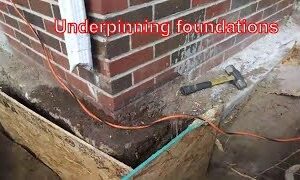Concrete house slabs Melbourne foundations can provide an attractive option for homes on generally flat terrain, yet can still be affected by frost and other environmental elements.
A concrete slab is typically installed over compacted sand or gravel that has been compacted according to specification, while water lines and electrical infrastructure may also be laid prior to pouring the concrete.
Structural Strength
Concrete slab foundations provide a secure base for your home that can withstand significant weight. Unfortunately, however, they’re susceptible to damage caused by freezing temperatures: when temperatures drop below freezing levels and freeze and crack up underneath your slab. Over time this could weaken its integrity over time and weaken your foundation further.
Slab foundations do not require crawl spaces or basements, reducing both construction costs and energy bills while being less susceptible to moisture damage and radon gas leakage since they’re watertight structures.
Slab foundations may pose one drawback in that plumbing fixtures are embedded within concrete and therefore more difficult to access when in need of repair or replacement. Therefore, when choosing a contractor to build one for you, look for someone experienced working with this kind of foundation and is familiar with local climate and soil conditions as well. Slab foundations also tend to be more costly than other forms of foundation; however they’re fast and straightforward construction methods which will speed up the overall building process.
Durability
Concrete slab foundations can be constructed quickly as only one pour needs to take place, eliminating the need for timber support frames or termite treatments that often arise with other forms of foundations.
One disadvantage of a concrete slab foundation is that it doesn’t offer sufficient room for pipes, ductwork and electrical panels and wiring to be housed in an organized manner. When these systems need servicing or repairs, accessing them requires breaking through concrete to gain entry which increases costs and lengthens repair times significantly.
To avoid such problems in cold climates, t-shaped footings extending below the frost line are frequently employed alongside a concrete slab foundation to alleviate moisture build-up beneath it and allow excess moisture to accumulate beneath. Moisture damage may result in cracking, mold growth and other structural damages which require expensive repair work. To combat such moisture issues effectively in these colder areas, an integral t-shaped footing system may be utilised along with the slab foundation itself to alleviate issues.
Insulation
With a slab foundation, there is no crawlspace or basement available, meaning gas and water lines must be buried beneath the house to remain out of sight and protected, yet still be easily accessible should repairs or replacement be necessary. Unfortunately, this also makes them harder to access for maintenance purposes if the pipes crack and allow moisture into your home, leading to costly and time consuming repairs that might need to be performed as soon as possible.
To prevent this from occurring, insulation should be placed along the exterior slab edge and under its footing. Preferably this would consist of semi rigid board insulation such as mineral wool/stone wool or fiberglass; however in cold climates high-density spray foam (R-value optimized through energy modeling) may also be suitable.
At the perimeter of insulation lies stainless steel flashing that acts as capillary break and moisture control. Furthermore, under slab insulation must be polyisocyanurate rigid board insulation which is both fire-retardant and moisture proof.
Accessibility
Slab foundations are lower to the ground than crawl space homes, making them easier to access for people with mobility issues such as seniors or parents of young children. This makes slaf homes particularly beneficial in this respect.
Slab-on-grade foundations don’t require as much ventilation than crawl spaces do, potentially saving homeowners money on heating bills. When choosing a foundation type it is important to take your local climate and soil conditions into consideration when making this decision.
Noticing the concrete casing around plumbing pipes can present additional challenges when you need to make repairs, making access difficult for repairs and increasing repair costs and repair times. Furthermore, leaks from these pipes are difficult to detect and may incur higher water bills; luckily there are steps you can take to improve soil drainage that may help ease these concerns.



